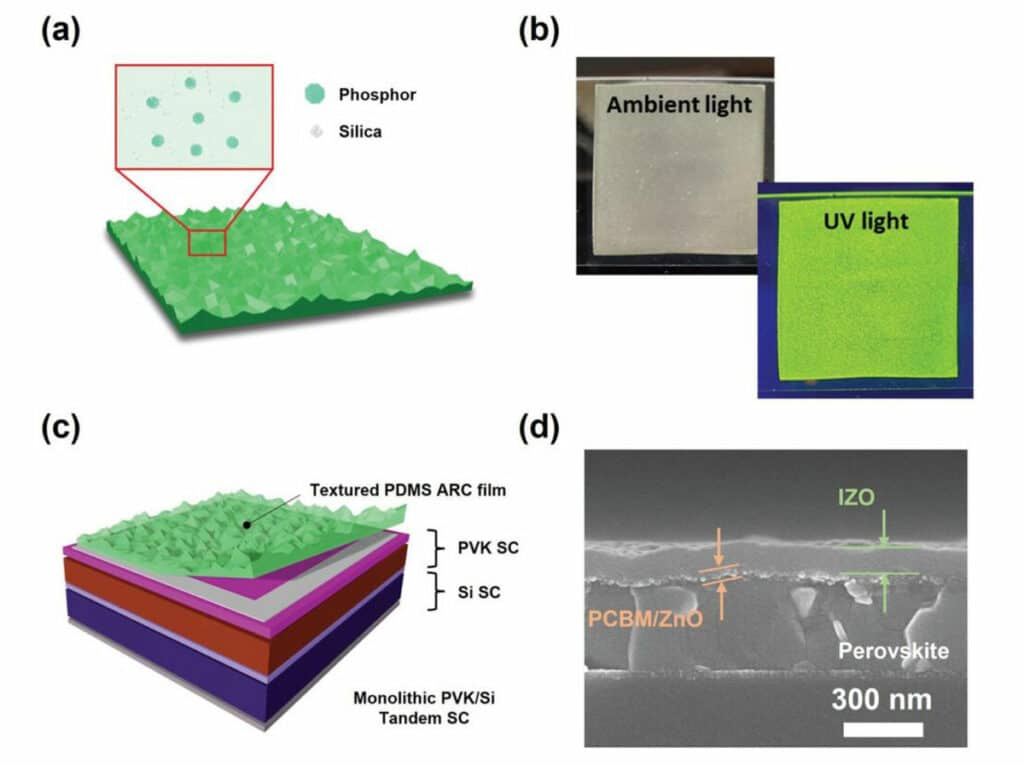Researchers at South Korea’s Ulsan National Institute of Science and Technology (UNIST) have succeeded in achieving a power conversion efficiency (PEC) of 23.50% in a perovskite-silicon tandem solar cell built with a special textured anti-reflective coating (ARC) polymeric film.
This breakthrough has been led by Professor Kyoung Jin Choi and his research team in the Department of Materials Science and Engineering at UNIST, in collaboration with Professor Jung-Kun Lee and his research team from the University of Pittsburgh in the United States.
For their work, the research team engineered the optical properties of a textured anti-reflective coating (ARC) polymeric film by combining the down-conversion effect of large phosphor particles and the multiple scattering effects of silicon dioxide (SiO2) nanoparticles. To address the parasitic absorption of ultraviolet (UV) light, phosphors are added to convert UV light to visible light and increase the total transmittance of ARC film.
However, the embedded phosphors increase the reflectance of the ARC film due to the large particle size and high refractive index of phosphors. Such a backward scattering problem of phosphors is compensated by adding spherical SiO2 nanoparticles.

Their experimental and computational results also show that SiO2 nanoparticles in the ARC film decrease the reflectance by increasing the diffuse transmittance. In addition, the power conversion efficiency of the device with the ARC film was sustained for 120 hours, maintaining 91% of its initial value. For comparison, the PCE of existing devices dropped to 90% of its initial efficiency after 5 hours and then decreased to 50% after 20 hours.
Moreover, the initial efficiency of the solar cell has also increased by nearly 4.5% compared to the previous one. “This optically engineered ARC film successfully promotes the light absorption of the perovskite/silicon tandem solar cell, leading to the improvement of power conversion efficiency of the tandem cell from 22.48% to 23.50%,” noted the research team on the paper.
Journal reference:
- Seongha Lee, Chan Ul Kim, Sumin Bae, Yulin Liu, Young Im Noh, Ziyu Zhou, Paul W Leu, Kyoung Jin Choi, Jung‐Kun Lee. Improving Light Absorption in a Perovskite/Si Tandem Solar Cell via Light Scattering and UV‐Down Shifting by a Mixture of SiO 2 Nanoparticles and Phosphors. Advanced Functional Materials, 2022; DOI: 10.1002/adfm.202204328
Improving light absorption in perovskite-silicon tandem solar cells
Source: Tambay News

0 Comments